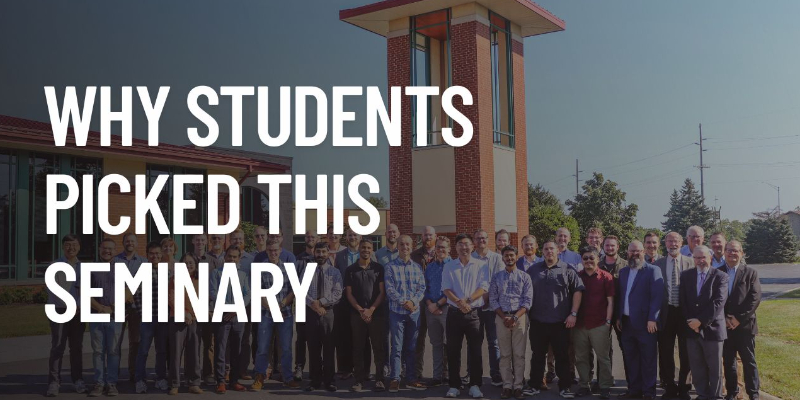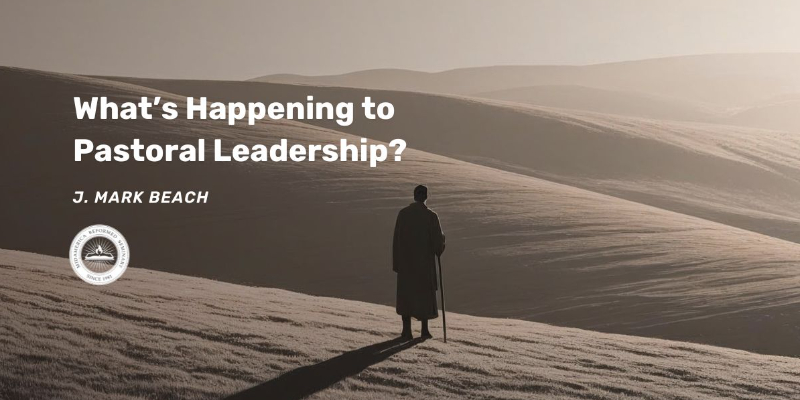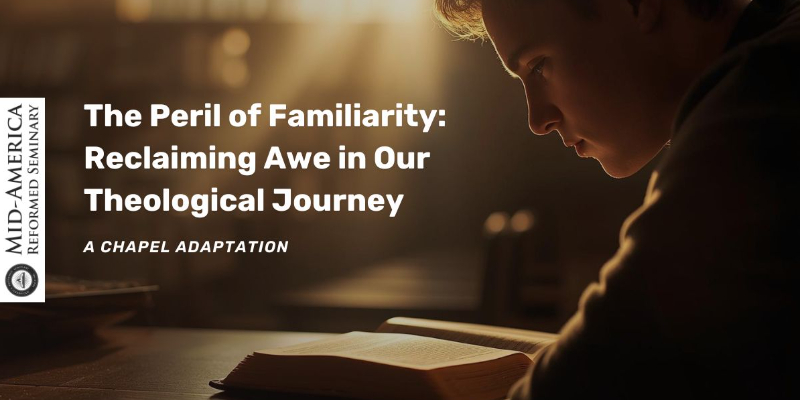
The Church Protected as She Witnesses to the Nations
“Then I was given a measuring rod like a staff, and I was told, ‘Rise and measure the temple of God and the altar and those who worship there, but do not measure the court outside the temple; leave that out, for it is given over to the nations, and they will trample the holy city for forty-two months. And I will grant authority to my two witnesses, and they will prophecy for 1,260 days, clothed in sackcloth.” (Revelation 11:1-3)
In the vision of Revelation 11, the apostle John sees a striking vision of Christ’s protection of His church until the end of redemptive history. John sees a “moving picture” of the church lovingly preserved by Christ and authorized to bear witness to the gospel throughout this present age. Though the church’s witness will be opposed and rejected by many, even appear at times to be extinguished, Christ will come to judge the nations and vindicate the cause of his blood-bought bride. When Christ comes to judge the peoples and nations who opposed his kingdom, the church (led by the “twenty-four elders”) will sing the grandest Hallelujah Chorus that has ever been sung (see verses 15-19)!
Notice how the sequence of visions in Revelation 11 focuses on two scenes or acts. In the first of these scenes, John is given a “rod” to measure the inner court of the temple but not the outer court (verses 1-2). In the second of these scenes, John hears a heavenly voice (a tacit reference to Christ Himself) narrating the prophetic ministry, eventual martyrdom, and final resurrection triumph of those whom the voice calls “my two witnesses” (verses 3-13).
The opening scene alludes to the prophet Ezekiel’s final, climactic vision during which he was carried to “a very high mountain” (Ezek. 40:3; cf. Rev. 21:10) to view the temple the Lord will build in the last days (Ezek. 40-48). In Ezekiel’s vision, the temple’s dimensions are measured by an angel (40:5), but in Revelation 13, the angel gives John a “measuring rod” to mark off the dimensions of “the temple of God and the altar, and those who worship in it.” The measuring of the temple symbolizes God’s decree to protect the temple or the church of Jesus Christ (cf. Rev. 3:12). The prohibition against measuring the outer court symbolizes that, while what is measured is protected by God, what is unmeasured is still exposed to assault by the nations and powers of this world.
The time frame for this period of the church is “forty-two months” or “1,260” days. Consistent with the following visions in Revelation 12 and 13, this period spans the time from Christ’s first advent until His second advent. It recalls similar periods in Israel’s history that find their fulfillment in the church’s history: the period of Israel’s exodus and subsequent wandering in the wilderness before entering the promised land (42 years); Daniel’s prophecy of end-time tribulation and ultimate victory for God and His people (7:25; 9:27; 12:7, 11-12); Christ’s ministry for three and a half years as “the faithful witness” (Rev. 1:5), leading to his crucifixion, resurrection, and ascension into heaven, etc. All of these periods typically represent times of divine protection in the face of unbelief and worldly opposition, culminating in the triumph of God’s kingdom and the vindication of His people.
In the second scene of the vision in Revelation 13, John sees a more extended picture of the church, represented by “two witnesses,” whose testimony goes forth with authority and power to all the nations. Why “two” witnesses? There are several reasons: 1) Reliable testimony can only be given by two or more witnesses (Deut. 19:5); 2) The church’s witness is a powerful fulfillment of the ministry of the two greatest prophets of the Old Testament economy, Moses and Elijah; 3) The church’s witness fulfills Zechariah’s “night vision” in which he saw a “lampstand” in the temple that was fueled by “two olive trees” (Zech. 4:11-14); and 4) the church’s witness is authorized by Christ who is Himself “the faithful witness” (Rev. 1:5). Though the church’s witness is resisted and even appears to be snuffed out by the beast who arises from the bottomless pit, it is vindicated at Christ’s coming. The apparent defeat of the church’s witness lasts only “three and a half days” (not years!) before Christ comes and breathes resurrection life into His people who will dwell with Him forever in the new Jerusalem.
The encouragement this vision gives us should be evident. We may lament the world’s opposition to Christ’s kingdom and the church’s witness. But do not be surprised and discouraged by it. Until Christ comes for His bride, He will protect her in the wilderness and demonstrate the truth of Zechariah’s words regarding the true power of her witness: “Not by might, nor by power, but by my Spirit, says the Lord of hosts” (Zech. 4:6).

Dr. Cornelis Venema serves as the President of Mid-America Reformed Seminary and Professor of Doctrinal Studies.
Recent articles




